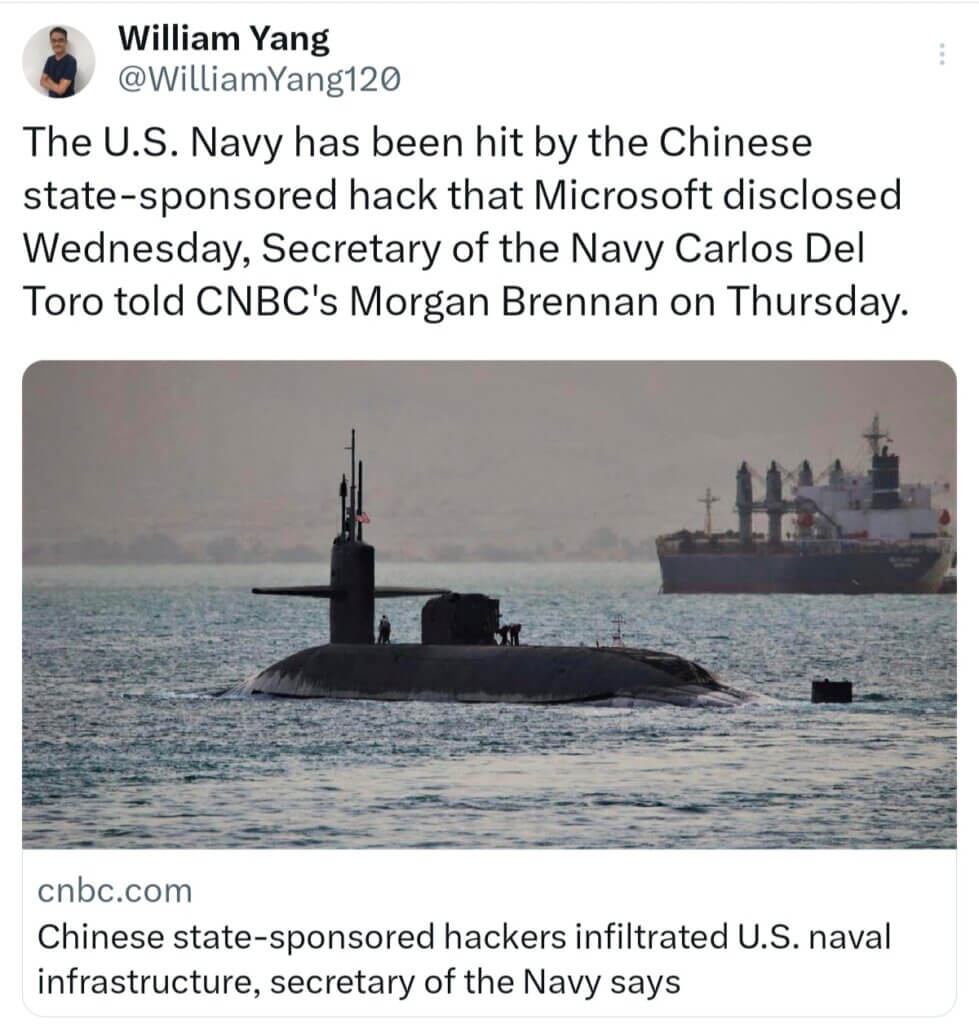
Introduction
In an era of rapidly evolving digital landscapes, cybersecurity is not only a private concern but a national defense priority. The American infrastructure recently faced an audacious cyber attack, with the U.S. Navy being one of the primary targets. How we respond to these invasions is critical to the future of our nation’s security and the strength of our Navy. It is imperative, now more than ever, for us to comprehend these challenges and stand united to support and protect our nation’s defenders.
Summary
This article delves into a recent cyber attack where Chinese-backed hackers targeted the U.S. Navy’s technology systems, seeking to disrupt critical communications. It focuses on the facts surrounding this breach, who is behind it, the affected areas, and the necessary steps being taken to prevent such incidents in the future.
Chinese Cyberattack: A Wake-up Call
Reports confirmed that hackers supported by China had successfully breached American infrastructure, including vital technology systems belonging to the U.S. Navy. The hackers’ aim was to disrupt crucial communication lines between the United States and Asia during potential crises. This was first reported by technology giant Microsoft, which attributed the hacking operation to a China-based group, Volt Typhoon.
Who is Pulling the Strings?
Microsoft identified the perpetrators as Volt Typhoon with “moderate confidence.” This group is a state-sponsored actor based in China that specializes in espionage and information gathering and has been active since at least 2021. The hackers employed legitimate credentials and small-office routers to infiltrate the systems, an approach known as “living off the land”. This audacious attack led to the breach of the U.S. Navy infrastructure on Guam, home to several crucial military installations.
The Scope of the Impact
The full extent of the breach is currently unclear, but the targets included several sectors such as communication, manufacturing, utility, transportation, construction, maritime, government, IT, and education. Secretary of the Navy Carlos Del Toro confirmed that the Navy was impacted by the hack, without disclosing further details. However, he expressed that China’s initiation of such a cyber attack was “no surprise”.
Key Takeaways
This attack is not an isolated incident, but rather part of a larger pattern of aggressive cyber operations by China, aiming to pilfer intellectual property and sensitive data. It is a wake-up call that highlights the persistent threat our nation’s critical infrastructure faces and provides insights into the sophisticated methods used by these malicious actors.
Taking Measures Against the Threat
In response to this attack, Microsoft has reached out to all groups affected. Additionally, cybersecurity agencies from the Five Eyes member nations have issued a joint advisory on the hack, outlining several preventive steps against such “living off the land” style intrusions.
Conclusion
As we sail through these uncharted waters of digital threats, it is crucial to stand united in support of the strength and security of our Navy. We must stay informed, vigilant, and proactive in understanding the nuances of these cyber threats, their implications, and the protective measures necessary to safeguard our nation’s assets. As a society, we can contribute to this mission by educating ourselves and raising awareness about the significance of cybersecurity in national defense, thus bolstering the resiliency of our Navy, and by extension, our nation.

